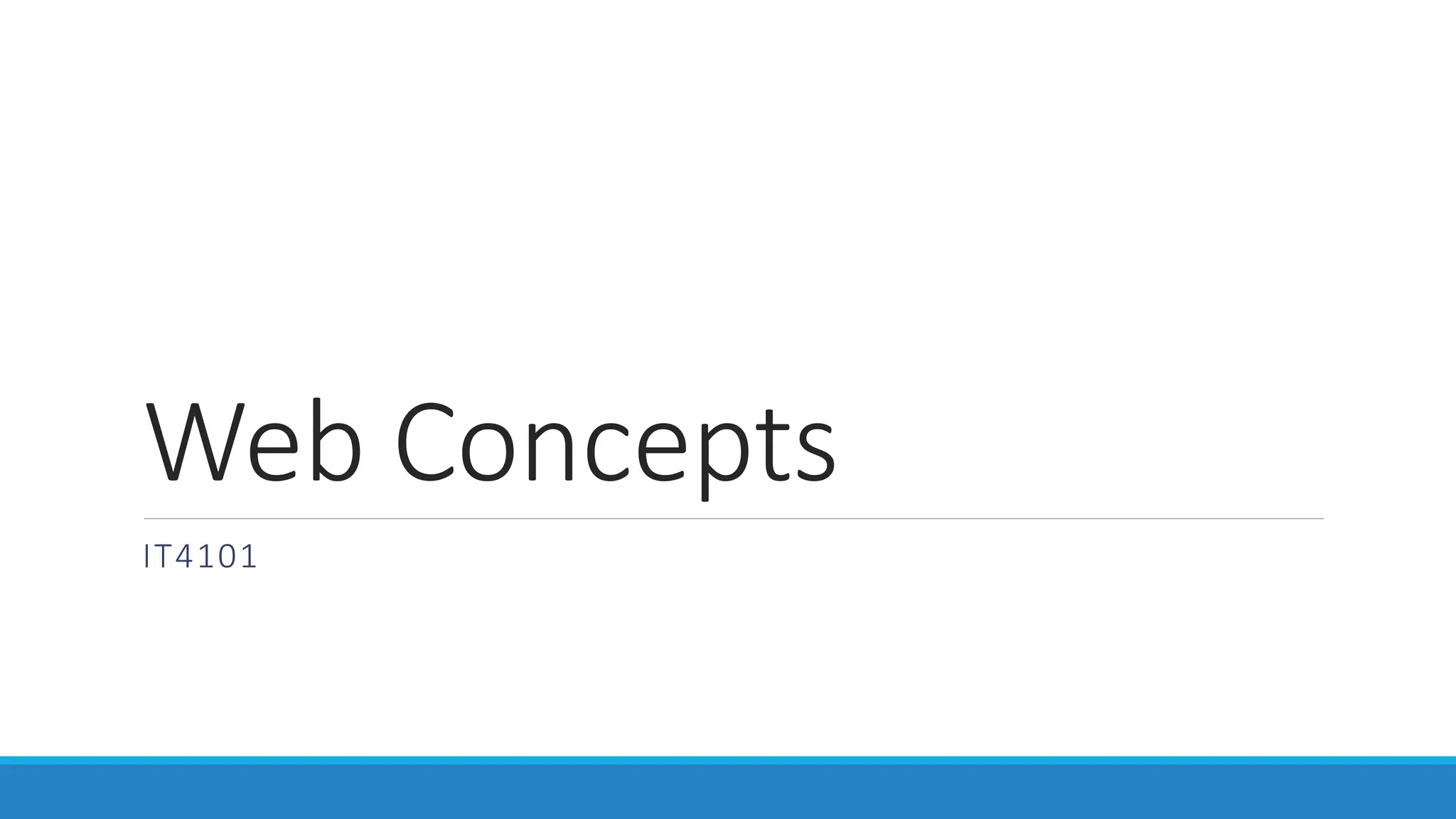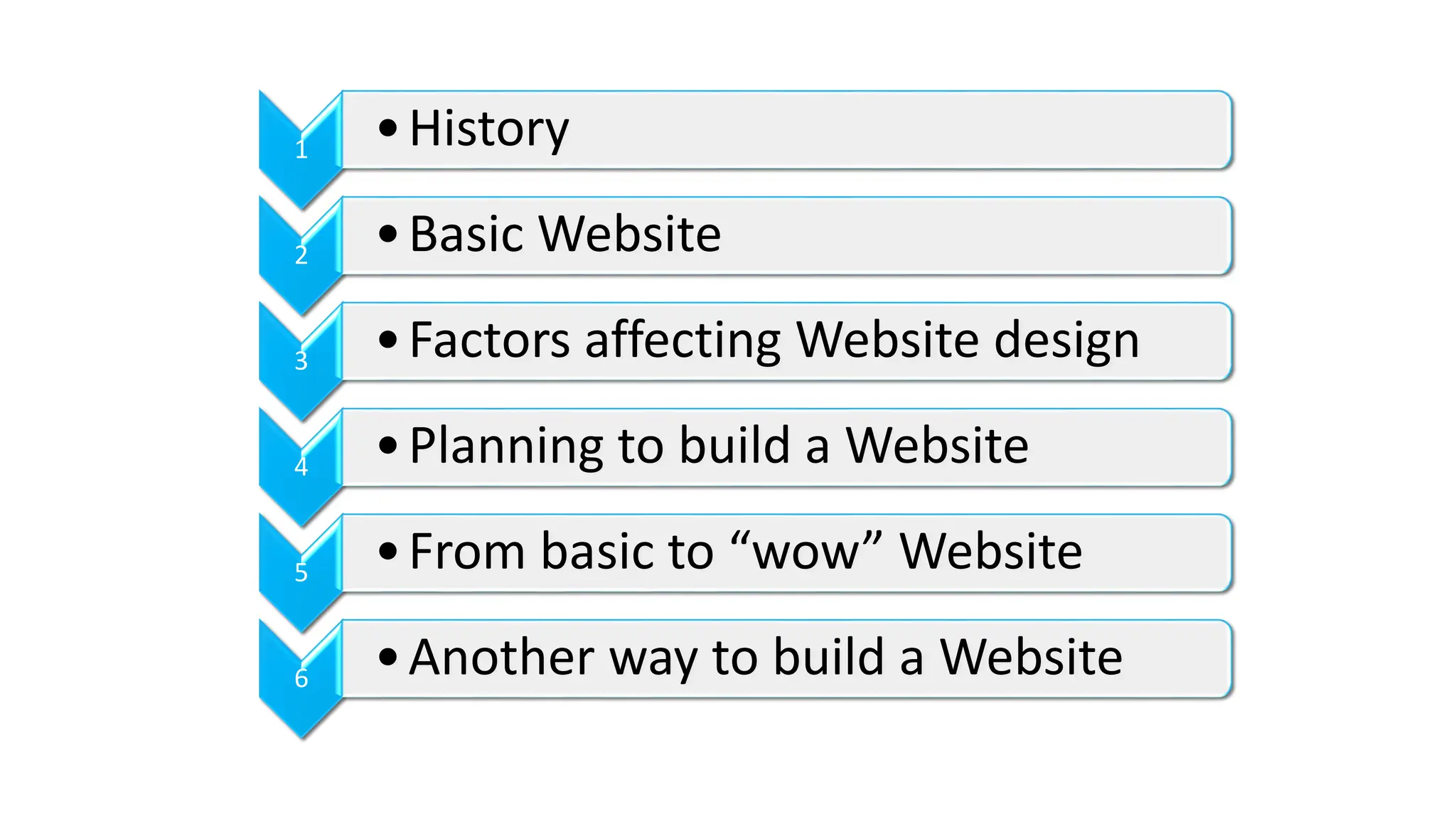The document provides an overview of web concepts, covering the history of websites, HTML and CSS, and best practices for website creation and design. It discusses the evolution of HTML from its inception by Tim Berners-Lee to HTML5, highlighting key features, standards, and coding practices that enhance web development. Additionally, it emphasizes the importance of semantic markup, browser compatibility, and the use of tools like Notepad++ for coding.







































